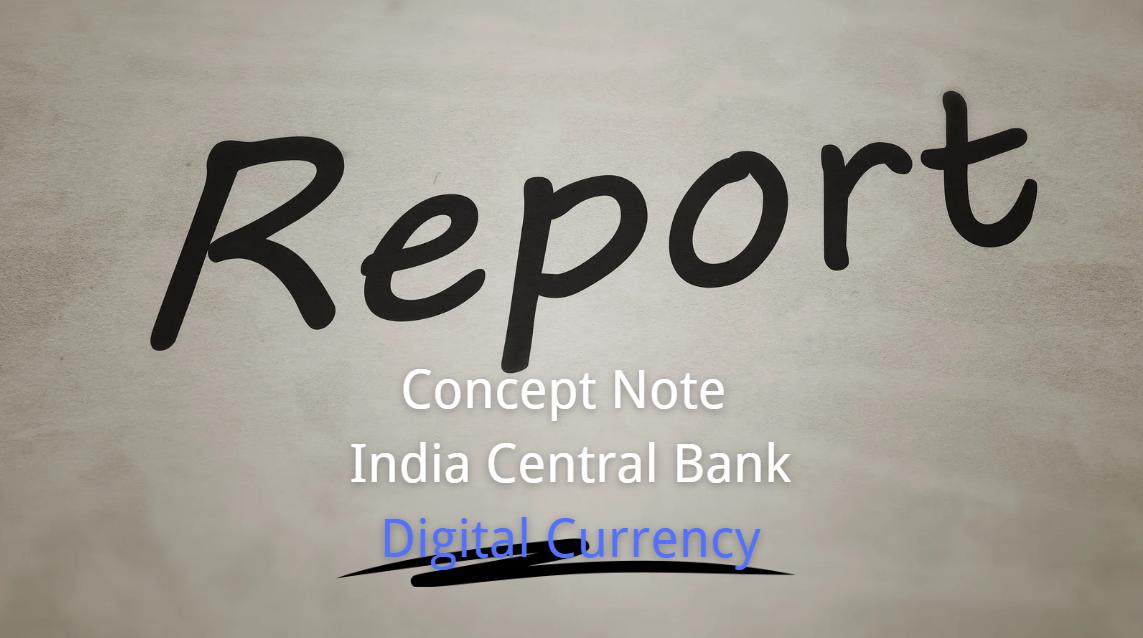Christopher J Waller: The US dollar and central bank digital currencies
As the payment system continues to evolve rapidly and the volume of digital assets continues to grow, it is critical to ensure that we keep both the benefits and risks of digital assets in the policy conversation, including the implications for America's role in the global economy and its place in the world. My speech today focuses on exactly this issue and on an aspect of the digital asset world that is now the center of domestic and international attention-central bank digital currencies (CBDCs) and how they relate to the substantial international role of the U.S. dollar.1
In January 2022, the Federal Reserve Board published a discussion paper on CBDCs to foster a broad and transparent public dialogue, including the potential benefits and risks of a U.S. CBDC.2 To date, no decisions have been made by the Board on whether to move forward with a CBDC. But my views are well known. As I have said before, I am highly skeptical of whether there is a compelling need for the Fed to create a digital currency.3
I am not a national security expert. But one area where economics, CBDCs, and national security dovetail is the role of the dollar. Advocates for creating a U.S. CBDC often assert how it is important to the long-term status of the dollar, particularly if other major jurisdictions adopt a CBDC. I disagree. As I will discuss, the underlying reasons for why the dollar is the dominant currency have little to do with technology, and I believe the introduction of a CBDC would not affect those underlying reasons. I offer this view, again, in the spirit of dialogue, knowing how important these issues are, and I am very happy to engage in vigorous debate regarding my view. I remain open to the arguments advanced by others in this space.
The Role of the U.S. Dollar
After World War II and the creation of the Bretton Woods system, the U.S. dollar served as the central currency for the international monetary system. Other countries agreed to keep the exchange value of their currencies fixed to the dollar, and eventually, countries came to settle international balances in dollars.4 That role has continued long after the Bretton Woods system dissolved.
By any measure, the dollar is the dominant global currency-for funding markets, foreign exchange transactions, and invoicing. It also is the world's predominant reserve currency.5

In terms of the dollar's reserve currency status, 60 percent of disclosed official foreign reserves are held in dollars, far surpassing the shares of other currencies, with the majority of these dollar reserves held in safe and liquid U.S. Treasury securities.6 Even in a world of largely floating exchange rates, many countries either implicitly or explicitly anchor their currencies to the dollar; together, these countries account for about half of world gross domestic product.7
The dollar is by far the dominant currency for international trade. Apart from intra-European trade, dollar invoicing is used in more than three-fourths of global trade, including 96 percent of trade in the Americas.8 Approximately 60 percent of international and foreign currency liabilities-international banking loans and deposits as well as international debt securities-are denominated in dollars. And the dollar remains the single most widely used currency in foreign exchange transactions. Why does this matter to the United States? As indicated in the Board's CBDC discussion paper, the dollar's international role lowers transaction and borrowing costs for U.S. households, businesses, and government. It widens the pool of creditors and investors for U.S. investments. It may insulate the U.S. economy from shocks from abroad.9 It also allows the United States to influence standards for the global monetary system.10
The dollar's role doesn't only benefit the United States. The dollar serves as a safe, stable, and dependable form of money around the world. It serves as a reliable common denominator for global trade and a dependable settlement instrument for cross-border payments. In the process, it reduces the cost of transferring capital and smooths the world of global payments, including for households and businesses outside of America.11 For example, consider the dollar's role in foreign exchange markets. To make a foreign exchange transaction between two lightly traded currencies, it is often less expensive to trade the first currency with the dollar, and then to trade the dollar with the second currency, rather than to trade the two currencies directly.
The factors driving the dollar's role as a reserve currency are well researched and well demonstrated, including the depth and liquidity of U.S. financial markets, the size and openness of the U.S. economy, and international trust in U.S. institutions and the rule of law. We must keep these factors in mind in any debate regarding the long-term importance of the dollar.
CBDCs and the U.S. Dollar
Threats to the U.S. dollar's international dominance are numerous, including shifting geopolitical alliances and pressure to invoice in alternative currencies, as well as deeper and more open foreign financial markets. My focus today is on just one supposed threat-namely, the purported shifting payments landscape as a result of the growth of digital assets, particularly CBDCs.
Recent years have seen a number of changes to the payments system, from instant interbank payments to mobile payment services to a shift toward nonbank payment providers. Some of this shift has been through the rise in digital assets and include cryptocurrencies and other crypto-assets such as stablecoins, which have money-like characteristics. They also include CBDCs. A CBDC is a digital instrument that is a liability of the central bank. That is all it is-a direct liability of a central bank.
What major security gap exists that a CBDC, and only a CBDC, can close? What would be the effect of CBDCs and other digital money-like instruments on the role of the dollar? There are many ways to approach this question, but I want to do so by using a simple example: What is it about a CBDC that would make a non-U.S. company, engaging in international financial transactions, more or less likely to use the dollar? This example, of course, focuses on the reasons for why contracts are generally invoiced in U.S. dollars, which is just one feature of the dollar's international role. To me, however, it simplifies the overall question regarding the effect of a CBDC on the dollar's dominance.
We can break down this question into three others: First, would a foreign CBDC affect this non-U.S. company's decisions? Second, would a U.S. CBDC affect them? And, third, while stablecoins are not CBDCs, how would a privately issued stablecoin have a different effect?
Foreign CBDCs
First, I will consider the emergence of one or more foreign CBDCs in a world with no U.S. CBDC. What would be the effect on the non-U.S. company? Let's assume the company acts pragmatically; it would only move away from using the U.S. dollar if it is better off by doing so. The discussion around this question usually tends to focus on the potential technological advantages of a CBDC and doesn't grapple with the underlying reasons for the dominance of the dollar. That is, advocates for a CBDC tend to promote the potential for a CBDC to reduce payment frictions by lowering transaction costs, enabling faster settlement speeds, and providing a better user experience. I am highly skeptical that a CBDC on its own could sufficiently reduce the traditional payment frictions to prevent things like fraud, theft, money laundering, or the financing of terrorism.12 Though CBDC systems may be able to automate a number of processes that, in part, address these challenges, they are not unique in doing so. Meaningful efforts are under way at the international level to improve cross-border payments in many ways, with the vast majority of these improvements coming not from CBDCs but improvements to existing payment systems.13
For argument's sake, though, let's suppose that this foreign CBDC is more attractive for payments to the non-U.S. company, perhaps for technological reasons, or because the preferences of the firm's consumers or trading partners change in response to the introduction of the CBDC. Due to the well-known network effects in payments, the more users the foreign CBDC acquires, the greater will be the pressure on the non-U.S. company to also use the foreign CBDC. In this case, it is true that the appeal of the foreign CBDC as a transactions medium-not as a unit account or store of value-might gain at the expense of the dollar. These effects will likely only be on the margin because they rely on a large enough number of individuals and businesses being nearly indifferent between the dollar and the foreign currency in CBDC form.
But the broader factors underpinning the dollar's international role would not change. Changing those factors would require large geopolitical shifts separate from CBDC issuance, including greater availability of attractive safe assets and liquid financial markets in other jurisdictions that are at least on par with, if not better than, those that exist in the United States. The factors supporting the primacy of the dollar are not technological, but include the ample supply and liquid market for U.S. Treasury securities and other debt and the long-standing stability of the U.S. economy and political system.14 No other country is fully comparable with the United States on those fronts, and a CBDC would not change that.
Finally, as I've noted before, it is possible that a foreign-issued CBDC could have the opposite of its intended effect and make companies even less willing to use that country's currency. Since digital currencies would make it easier for a government to monitor transactions, shifting to a CBDC might make a company less willing to use that country's currency. For example, I suspect that many companies will remain wary of China's CBDC for just this reason.
U.S. CBDC
I am also skeptical that a U.S. CBDC would affect this hypothetical foreign company's decisionmaking. A U.S. CBDC is unlikely to dramatically reshape the liquidity or depth of U.S. capital markets. It is unlikely to affect the openness of the U.S. economy, reconfigure trust in U.S. institutions, or deepen America's commitment to the rule of law. As I have said before, the introduction of a U.S. CBDC would come with a number of costs and risks, including cyber risk and the threat of disintermediating commercial banks, both of which could harm, rather than help, the U.S. dollar's standing internationally. Like a foreign CBDC, the technological advantages of a U.S. CBDC would have a hard time overcoming long-standing payments frictions without violating international financial integrity standards. For the non-U.S. company already conducting its business in dollars, introducing a U.S. CBDC would not provide material benefits over and above the current reasons for making U.S. dollar-denominated payments. For non-U.S. companies conducting their business in currencies other than dollars, a U.S. CBDC similarly would likely not be preferred to their current options. It could be that individuals outside the United States would find a U.S. CBDC particularly attractive, but, again, making a U.S. CBDC globally available would raise a number of issues, including money laundering and international financial stability concerns. And as with a foreign-issued CBDC, the dollar's function as a unit of account and store of value is unlikely to be affected, resulting in a limited effect on the international role of the dollar.
Stablecoins
The last scenario I want to consider is one in which a privately issued stablecoin pegged to a sovereign currency is available for international payments. Stablecoins are crypto-assets that aim to maintain a stable value relative to a specified asset or pool of assets.15 The reasons that stablecoins may be more attractive than existing options for payments include their ability to provide real-time payments at lower cost between countries that were previously poorly serviced and to provide a safe store of value for individuals residing in or transacting with countries with weak economic fundamentals. This is different than an intermediated U.S. CBDC, for which access in developing economies would depend on banks' incentives to provide such access. Stablecoins, however, may be held directly in any country that allows its citizens to do so. To improve payments, especially for jurisdictions that are not well served under the current global payments ecosystem, stablecoins must be risk-managed and subject to a robust supervisory and regulatory framework.
Could such an asset affect the role of the U.S. dollar? Once again, I am unsure whether even a large issuance of a stablecoin could have anything more than a marginal effect. It has often been suggested by commentators that private money-like instruments such as stablecoins threaten the effectiveness of monetary policy. I don't believe that to be the case, and it should be noted that nearly all the major stablecoins to date are denominated in dollars, and therefore U.S. monetary policy should affect the decision to hold stablecoins similar to the decision to hold currency. This follows from a vast body of evidence in international economics showing how countries pegging their exchange rates effectively import monetary policy from the country to which their currency is pegged.16
Also, because stablecoins are pegged to the dollar, they may increase rather than reduce the primacy of the dollar abroad, since demand for stablecoins increases demand for dollar-denominated reserve assets held by the stablecoin issuer.
Conclusion
The ongoing debate over the risks and benefits of a CBDC is important, and I am happy to continue to engage with both advocates and skeptics of CBDCs. But, for the reasons I have laid out, I don't think there are implications here for the role of the United States in the global economy and financial system. We should instead focus and debate the salient CBDC-related topics, like its effects on financial stability, payment system improvements, and financial inclusion. Thank you again for having me to participate in this fantastic event.
1 These views are my own and do not represent any position of the Board of Governors or other Federal Reserve policymakers.
2 See Board of Governors of the Federal Reserve System (2022), "Money and Payments: The U.S. Dollar in the Age of Digital Transformation" (PDF) (Washington: Board of Governors, January).
3 See Christopher J. Waller (2021), "CBDC: A Solution in Search of a Problem?" speech delivered at the American Enterprise Institute, Washington (via webcast), August 5.
4 See Federal Reserve Bank of St. Louis (2013), "Federal Reserve History: Creation of the Bretton Woods System," webpage.
5 See Committee on the Global Financial System (2020), "U.S. Dollar Funding: An International Perspective," (PDF) CGFS Papers 65 (Basel, Switzerland: CGFS, June).
6 These figures are taken from Carol Bertaut, Bastian von Beschwitz, and Stephanie Curcuru (2021), "The International Role of the U.S. Dollar," FEDS Notes (Washington: Board of Governors of the Federal Reserve System, Oct. 6).
7 See Ethan Ilzetzki, Carmen M. Reinhart, and Kenneth S. Rogoff (2019), "Exchange Arrangements Entering the Twenty-First Century: Which Anchor Will Hold?" Quarterly Journal of Economics, vol. 134 (May), pp. 599-646.
8 See Bertaut, von Beschwitz, and Curcuru "International Role of the U.S. Dollar," in note 6; and Emine Boz, Camila Casas, Georgios, Georgiadis, Gita Gopinath, Helena Le Mezo, Arnaud Mehl, and Tra Nguyen (2020), "Patterns in Invoicing Currency in Global Trade" IMF Working Paper WP/20/126 (Washington: International Monetary Fund, July).
9 For example, pass-throughs of exchange rate changes to U.S. inflation are reduced materially when the overwhelming majority of U.S. imports are invoiced in U.S. dollars.
10 See Board of Governors, "Money and Payments," p. 15, in note 2.
11 See Committee on the Global Financial System, "U.S. Dollar Funding," in note 5.
12 The legal and reputational risks associated with noncompliance with requirements on anti-money laundering and countering the financing of terrorism often result in financial institutions choosing to be very cautious, including by requiring manual intervention in cases of uncertainty, which decreases speed and increases costs of cross-border payments. See Financial Action Task Force (2021), Cross Border Payments: Survey Results on Implementation of the FATF Standards (PDF) (Paris: FATF, October).
13 See Financial Stability Board (2020), Enhancing Cross-border Payments: Stage 3 Roadmap (PDF) (Basel, Switzerland: FSB, October).
14 Several recent studies set forth similar perspectives, including the following: U.S. Department of the Treasury (2022), The Future of Money and Payments: Report Pursuant to Section 4(b) of Executive Order 14067 (PDF) (Washington: Department of the Treasury, September); and Bertaut, von Beschwitz, and Curcuru, "International Role of the U.S. Dollar," in note 6.
15 See Christopher J. Waller (2021), "Reflections on Stablecoins and Payments Innovations," speech delivered at "Planning for Surprises, Learning from Crises," 2021 Financial Stability Conference, Cleveland (via webcast).
16 See, for instance, Maurice Obstfeld and Alan M. Taylor (2004), Global Capital Markets: Integration, Crisis, and Growth (New York: Cambridge University Press).




















































First, please LoginComment After ~